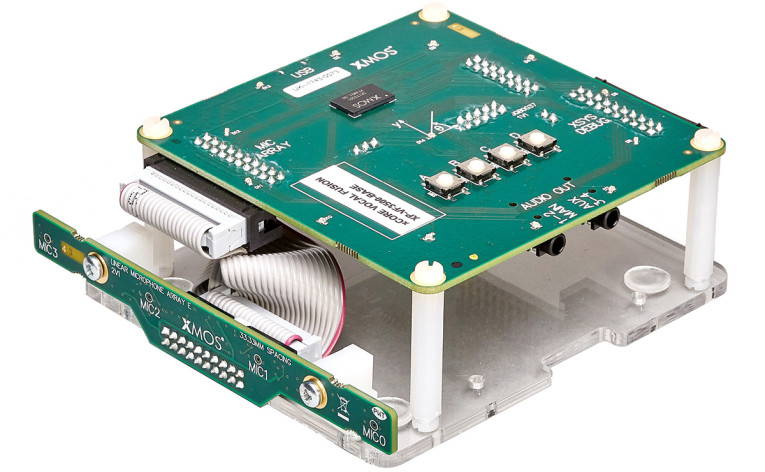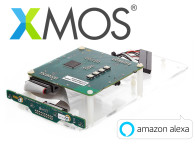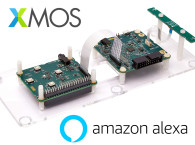
Anyone that has seen the private demonstrations of XMOS' new stereo-AEC voice capture and blind sound source separation technologies during CES 2018 understands why the British company is leading the market in advanced embedded voice and audio solutions to the consumer electronics market. Now XMOS will publicly display those edge-of-room voice-enabled electronics solutions in Barcelona.
Smart speakers with Alexa Voice Service and Google Assistant support have dramatically changed how consumers interact with entertainment systems, and the demand for voice controlled stereo audio and entertainment systems that appear at the edge of rooms is forecast to increase dramatically. “Our consumer research shows that owners love their smart speakers and this bodes well for rapid uptake of voice control devices in the coming years,” says Jack Wetherill, Principal Analyst for Home Electronics at Futuresource Consulting.
“Inclusion of voice control in wireless speakers has taken an already booming market to a new level, with smart speaker sales up threefold globally in 2017 to exceed 25m units. Further growth of at least 50% is anticipated this year. Voice control has become a ‘must-have’ feature in wireless speakers and will rapidly penetrate other large categories such as the $84bn TV displays market and the $21bn set-top box & media streamer market, the vast majority of which are stereo or multi-channel devices.”
XMOS will demonstrate its new VocalFusion Stereo Dev Kit (XK-VF3500-L33), the world's first stereo acoustic echo cancellation (AEC) far-field linear microphone array solution, based on the XVF3500 voice processor, which delivers 2-channel full stereo-AEC. Uniquely, the solution also supports configurable AEC latency, where the AEC reference signals can be accurately calibrated, and the latency adjusted, to enable after-market far-field voice accessories for existing consumer electronics products.

The other solution on display is the latest XMOS VocalSorcery, a Blind Source Signal Separation technology that can spatially identify individual speakers or conversations within a crowded noisy audio environment to achieve optimized voice capture and input into speech recognition systems. This technology could be used for example to diarize voice conferences, and give a full transcript, by speaker of multi-person conversations, and ensure that all speakers on a conference call are heard with equal volume.
“Our stereo development kit delivers state of the art acoustic echo cancellation, and is ideally suited for stereo TV, soundbar and set-top box applications,” comments Mark Lippett, President and CEO at XMOS. “We’re delighted to bring this solution to GSMA Mobile World Congress where voice, AI and biometrics are enabling new forms of human-machine interface.”
“We’re also very proud to be able to demonstrate our next generation of source separation algorithms, VocalSorcery, which solves what is sometimes described as the “Cocktail Party Problem”, and enables commercial solutions for improved conference calls and in-car phone calls,” he added. “With our class-leading stereo solution, and our next generation of algorithms on show, we are confident that we have the most comprehensive portfolio of voice products available today.”
XMOS voice processors deliver sophisticated voice digital signal processing (DSP) including a full duplex acoustic echo canceller (AEC) with barge-in capability that enables users to interrupt or pause a device that's playing music, and an adaptive beamformer that follows a speaker. Additional sophisticated dereverberation, automatic gain control, and noise suppression provide crystal clear voice interaction experiences even in noisy environments, in a single device.
XMOS will be in a Hall 7 Meeting Room (by appointment only) Mobile World Congress 2018, Barcelona, 26th February -1st March 2018.
www.xmos.com







